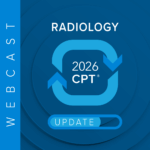Overlapping extrapolations require providers to pay twice.
Some Medicare auditors have been caught “double-dipping,” the practice of sampling and extrapolating against the same set of claims. This is like getting two traffic tickets for a single instance of running a red light. This seedy practice doubles the amount of recoupment demanded. Providers have to pay twice.
The healthcare provider in this case is a well-established operation that has been helping patients for years. In 2017, it was audited by Recovery Audit Contractor (RAC) No. 1 (we will keep the names anonymous). In this audit, it chose to investigate claims filed across two years.
The Medicare Program Integrity Manual (PIM) provides some guidance for audits, and specifies that if the audit period is longer than a single year, then more than one audit should be conducted. But let’s set aside that problem for the time being. In this case, the audit period covered 2014 to 2016.
It is difficult to know exactly how the audit was done, because the RAC, as can be typical, failed to document its work. We know that it skipped some crucial steps in its methodology. Nevertheless, it did come up with a giant recoupment demand, as would be expected.
The provider then began its march through the Medicare appeals process. It is now 2022, and this audit finally is coming up for review by an Administrative Law Judge (ALJ). It is eight years after the claims were filed, and six years after the audit was concluded. As we know, this type of delay is characteristic of the system.
In the meantime, a second auditor, RAC No. 2, conducted another audit. This time, it chose to look at claims filed during 2015. These claims were in the chronological midpoint of the claims analyzed for the RAC No. 1 audit, which covered 2014-2016.
Both audits managed to reject almost all claims filed in the samples taken, and this predictably led to a giant recoupment number from each. As usual, in both cases, no credits were given for “underpayments, in whole or in part,” as required by the PIM. As we know, auditors never seem to identify underpaid claims, only overpaid claims.
What is the result of this double-dipping? Assuming the audit from RAC No. 1 is paid, it would by definition include extrapolation from the rejected claims filed during 2015.
For illustrative purposes, let’s assume that RAC No. 1 found a 100-percent error rate in the sample. This would mean that almost all of the payments made during the audit period could fall into the recoupment number. So, if the audit period was from 2014 to 2016, this would include the claims filed during 2015.
If we assume that a similar 100-percent error rate was found in the RAC No. 2 audit for 2015, then this also would lead to a recoupment demand for almost all of the claims filed during 2015. But that money already was demanded in the RAC No. 1 audit and resulting extrapolation. So, the healthcare provider is being asked to pay twice for all of the claims filed during an entire year (2015).
In addition to paying twice, the provider must defend twice, which means all of the expense associated with the Byzantine and lengthy appeals process, e.g., hiring counsel, coders, statistical consultants, medical experts, and others to put up a defense before either the ALJ or the Medicare Appeals Council.
We will wait to see if the ALJ is sharp enough to comprehend the problem in this case.
In the meantime, we must ask: how could such an event happen? One guess is as good as another. One possibility is that the two RACs were coordinating with each other to shake down the provider. But that would be giving too much credit to the business skills of the RACs. A more likely explanation is that the second RAC did not bother to check to see if that period already was the target of an ongoing audit. This raises the question of how this “check” would take place.
Is there a centralized reporting system so that one RAC can determine if the provider already is being targeted by one of the RAC’s competitors? My guess is that there is no such system in place, and as a result, RACs are flying blind. As they say, “the right hand knowest not what the left hand is doing.”
Finally, we must consider the devastating effect on the provider. They are forced to undergo the very high cost of making a Medicare appeal. The cost is doubled for the 2015 claims, because the same claims must be defended again.
An additional problem arises as we notice that the same claims were rejected for different reasons by the two auditors. One could argue, for example, that for each claim rejected by RAC No. 1, the record indicates that RAC No. 2 failed to find the same problem, and vice versa. But the counter-argument would be that both RACs found a problem, even if it was for different reasons. It is doubtful, however, that this argument could be made, because each audit is being handled by a different ALJ.
We can be sure that this situation makes a compelling argument for some type of centralized coordinating mechanism to ensure this practice of “double-dipping” does not continue.
As for the appeals, unless further examination fails to confirm this double-dipping, both extrapolations should be thrown out.
Programming Note: Listen to RACmonitor investigative reporter Edward M. Roche report this story live during Monitor Mondays, Jan. 31, 2022 at 10 Eastern.
















